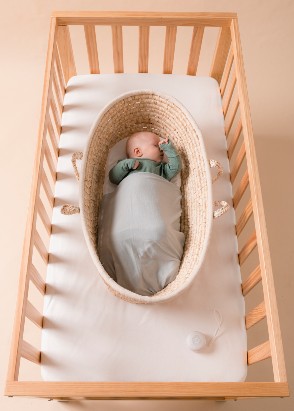Making the transition to a cot might seem daunting, but this is likely one of the first of many transitions for your little bub. And, as always, there’s a number of things to try to make the transition easier for both you and your baby.
1. Place baby's bed in the cot (if possible)
If your baby has been sleeping in a moses basket, Purflo Sleep Tight Baby Bed or similar portable baby bed, then a good way to start is by placing the baby bed in the cot and then place your baby in their bed as you normally would. For example place the moses basket in the cot and place the baby to sleep in their moses basket. This will help your baby get used to their new surroundings whilst still having the familiar, safe environment of their first bed.Once baby has had a few nights sleep this way, simply remove the moses basket (or other first bed) and place baby to sleep straight into their bed.
2. Keep Consistent
Keep as much the same as you possibly can. For example, if your baby has been sleeping in a sleeping bag, use the same sleeping bag when they move to the cot. If they’ve had white noise on, keep using it. By keeping consistent with as much as possible, baby still knows the cues for bedtime, it’s just in a different bed.
3. Day naps in the cot
It can be helpful to introduce your baby to their cot during the day. If you need to do something in your baby’s room, place your baby in their cot whilst you do your task, so they get used to the space during the day. You could also try baby’s day sleeps in the cot so help them get used to the space.
4. Introduce a bedtime routing
If you don’t already have a bedtime routine, now is the time to start. By going through a sequence of activities at a similar time each evening means baby will know that bedtime is coming. And for you and baby, a relaxing bath, time reading a story or giving baby a massage is a great way to bond at the end of the day, especially if dad’s are involved.





















